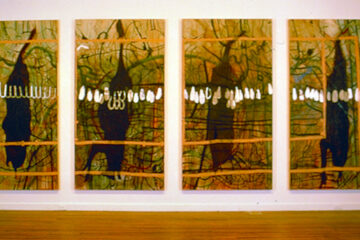
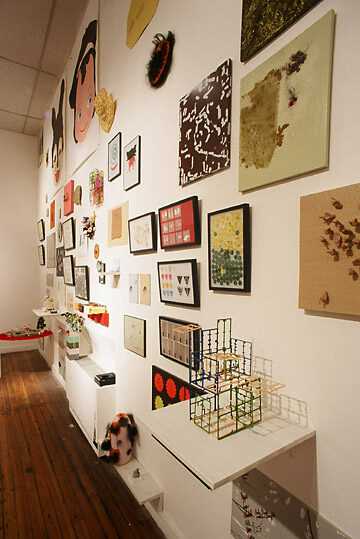


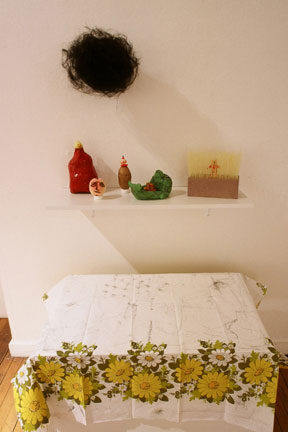















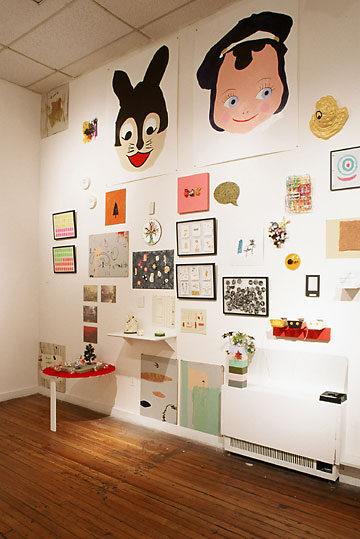




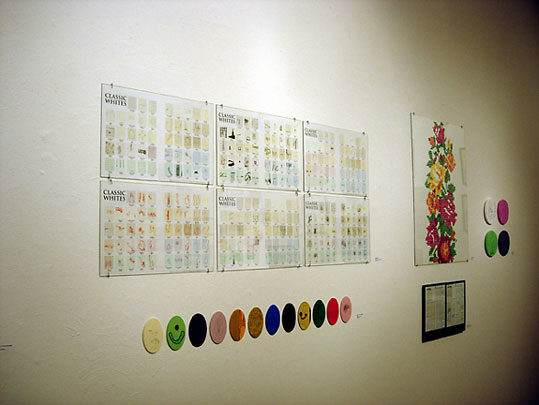
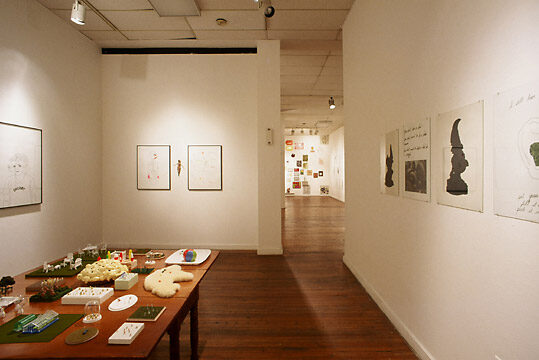




Art Fair of Multiple Personalities
Review by Todd Meyers for artUS
ArtUS 8 May . June 2005
School 33 Art Center, Baltimore, MD
January 15 - February 10, 2005
Denise Tassin uses sculpture, installation, and an assortment of drawings to conjure a "loser-ly" but ultimate perceptive personal stance. Tassin's work is not at all self-conscious and operates without aesthetic gimmickry. There are dramatic shifts between media and affects, which at times appear grand and, at others, completely impulsive. Similar to artists like Sean Landers, hers is a jarringly intimate and sometimes confessional engagement with art-making that does not require a set of technical parameters, being less a singular undertaking than a series of loosely connected projects. Like Landers, too, Tassin makes art within a genre already over-saturated with the oppressed, depressed, and repressed - where the art of self-loathing reads as a compulsion to repeat. At some point it seems that nearly every artist discovers a mystical land filled with neurotic possibility - a land long ago discovered, settled, and abandoned by others. In this way, "loser art" has become a kind of art-school colonial enterprise that colors everything with the willfully morose.
Tassin's work borders on but never quite enters this territory. Its head y quality is offset by subtle drawings consisting of clean, elegant lines with a highly inventive twist. In a series of small drawings produced by machines (absent from the show), Tassin creates soft graphite auroras as though out of luminous cosmic gas. These drawings appear alongside others drawn with a Sharpie held in Tassin's mouth. This series of "mouth drawings" contains phrases that, in Tassin's own words, are difficult (or uncomfortable) to articulate. The shaky scrawl in Stay Away from My Stuff (all works 2004) and You Are a Very Mean Person is barely legible, yet remains strangely poignant. In Mirror Image of Self, Tassin uses her ubiquitous Sharpie to produce a large self-portrait wherein the lines of her face appear intentionally distorted. This drawing, like a number of others here, conveys a kind of sad acceptance of one's physicality, but of a corpus drawn from imagination or sheer anxiety. Scotsman, the largest and perhaps the most interesting drawing in the show, contains a series of colored marker splotches resembling the weave of a latch-hook stitch, all radiating a crafty, almost geriatric ethos. Scotsman and Forest Aglow, a thrift-store-esque country landscape riven with pink glowing trees, both evoke an uncanny feeling, like that of having spent a psychedelic weekend at grandma's house. A whiff of nostalgia imbues Tassin's work, but it packs a skewed or even alien stench. Through intimate drawings and random objects, Tassin re-creates her unique cosmology out of the disparate pieces of others.

